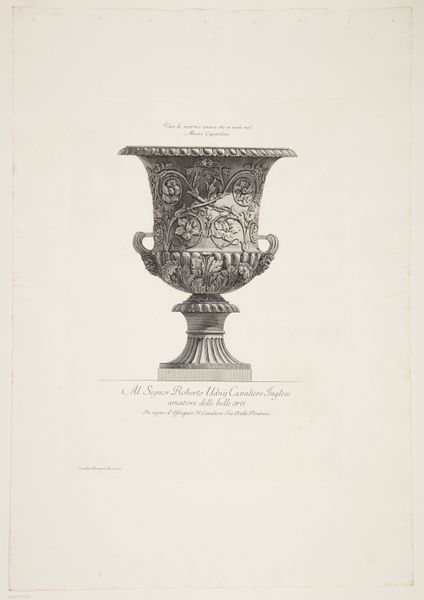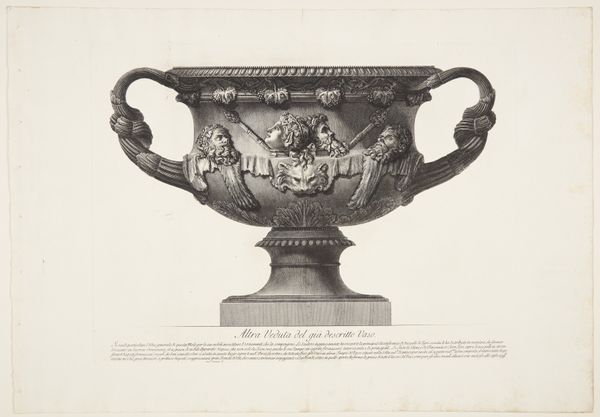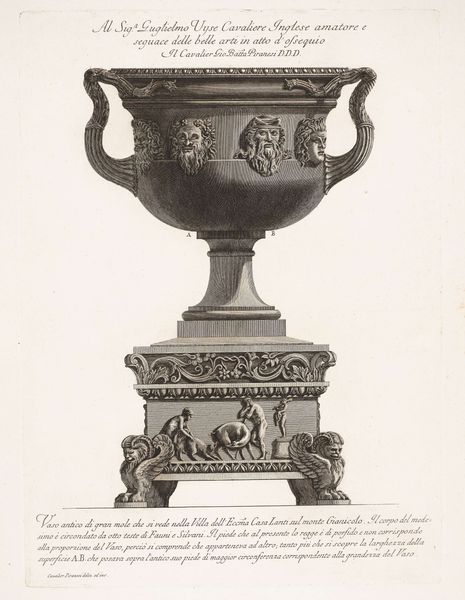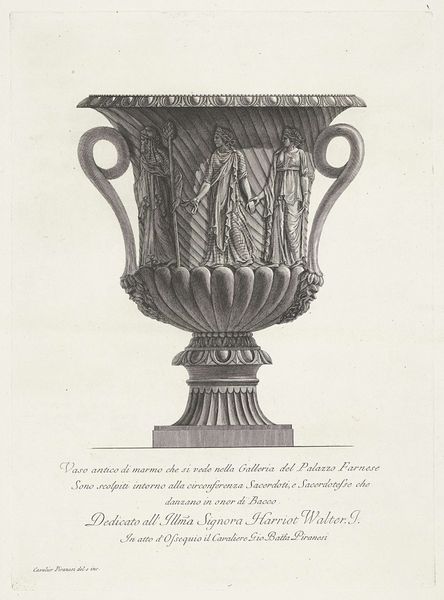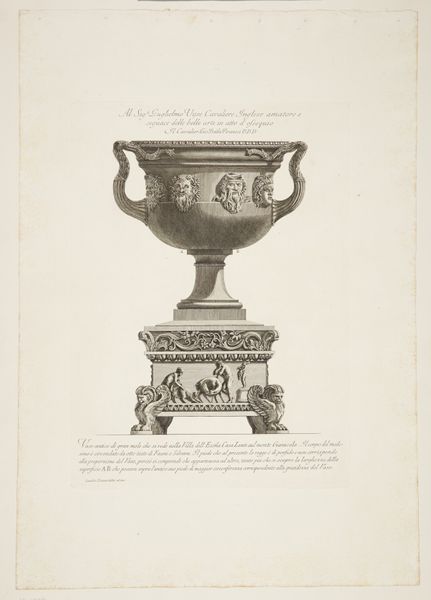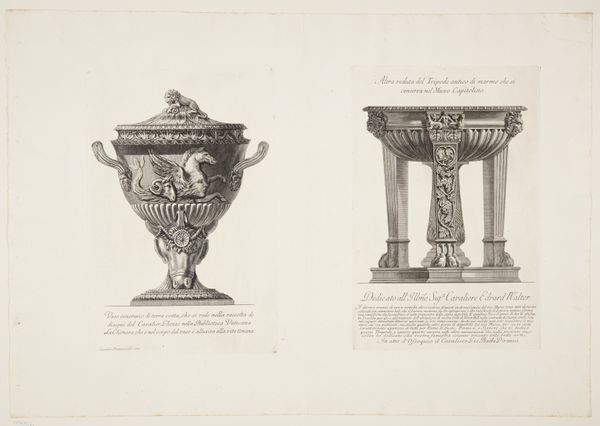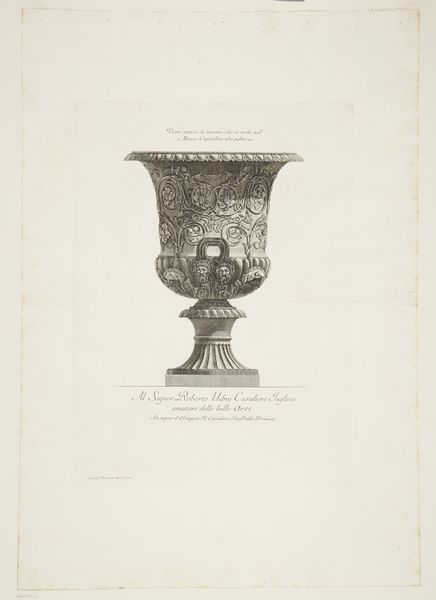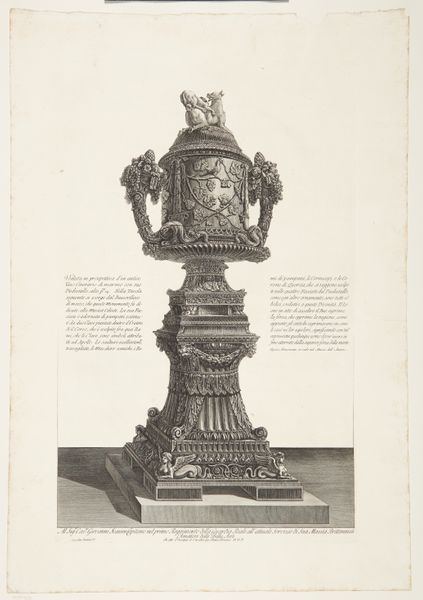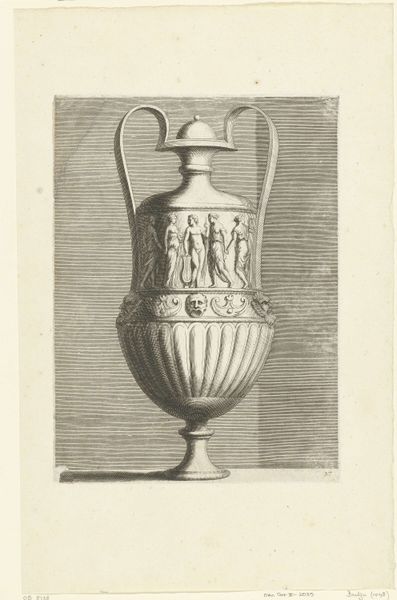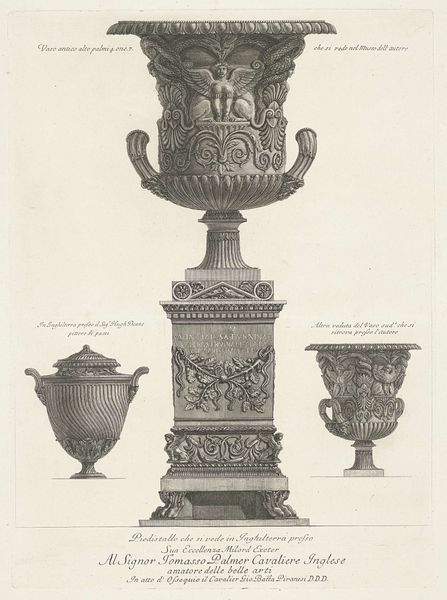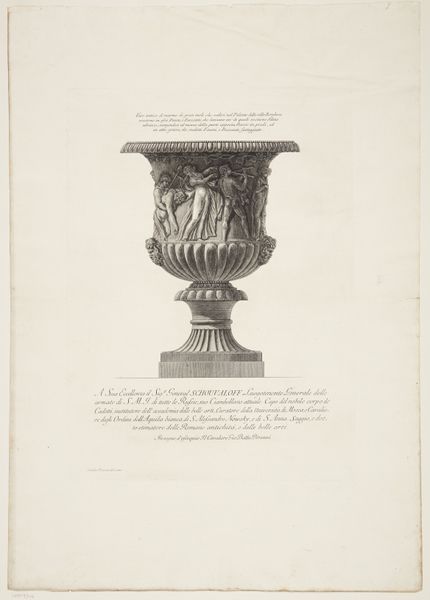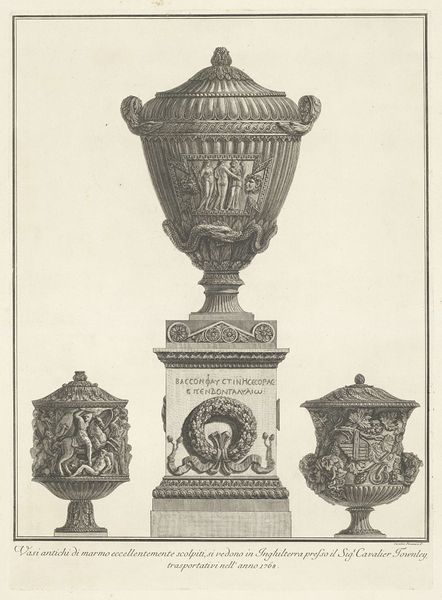
Large Marble Vase with Putti and Vine Leaves 1778
0:00
0:00
print, etching
#
pencil drawn
#
photo of handprinted image
#
light pencil work
#
shading to add clarity
# print
#
etching
#
pencil sketch
#
old engraving style
#
pencil drawing
#
pencil work
#
watercolour illustration
#
italy
#
pencil art
Dimensions: 22 9/16 x 14 13/16 in. (57.31 x 37.62 cm) (plate)31 x 21 1/2 in. (78.74 x 54.61 cm) (sheet)
Copyright: Public Domain
Curator: This etching from 1778 presents Giovanni Battista Piranesi’s vision of a "Large Marble Vase with Putti and Vine Leaves," currently residing at the Minneapolis Institute of Art. Editor: My first impression is one of controlled chaos. The stark black and white lends a neoclassical air, yet the detail is incredibly rich, almost overwhelming the eye. You have these playful putti almost fighting for space amongst the leaves. Curator: Indeed, it reflects a broader trend in 18th-century Europe. Piranesi, known for his dramatic architectural fantasies, was deeply influenced by the burgeoning antiquarian movement. Works like these prints circulated widely and shaped perceptions of classical antiquity for artists and collectors. These vases became powerful status symbols during a period of aristocratic Grand Tours. Editor: Absolutely. It’s tempting to imagine the physicality of this vase; I wonder about the labor involved in such intricate marble carving. How many artisans were employed and for how long? The print almost masks that process by focusing only on the idealized, finished object and not its social implications. Curator: An important point. What the print offers, that a three-dimensional vase doesn’t necessarily, is accessibility. This piece, through distribution channels of the era, contributed to defining neoclassical taste. By purchasing or viewing this, patrons were participating in a visual culture tied to specific notions of class, power and knowledge. Editor: True. And even the choice of material; marble suggests permanence, status, a direct link to a celebrated past. You could say the material itself speaks to its social context. Curator: And notice how the artist rendered surface texture and intricate carving details through incredibly refined etching techniques? The print is also testament to his workshop's technical virtuosity in producing a sharp printed reproduction from existing objects. Editor: It feels quite manipulative doesn't it? Piranesi gives a rather skewed impression through a material so easily replicated, masking questions of authenticity and original ownership while encouraging consumer culture surrounding ancient luxury. It would be interesting to track subsequent depictions of putti and their evolution through painting and even applied crafts. Curator: It truly encapsulates a fascinating intersection of artistic skill, classical aspirations, and the power of print culture in shaping 18th-century taste. Editor: It reminds us that even what seems purely decorative bears the mark of very real social relations and skilled material labor.
Comments
No comments
Be the first to comment and join the conversation on the ultimate creative platform.
